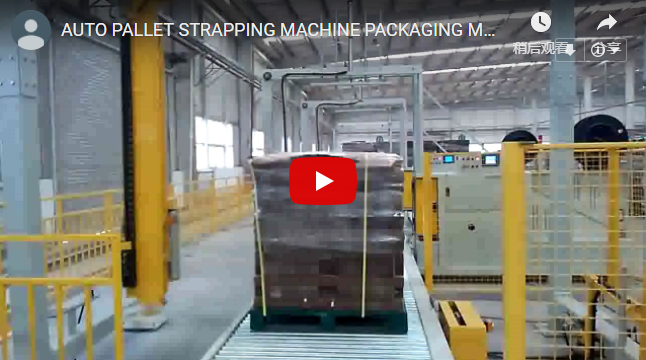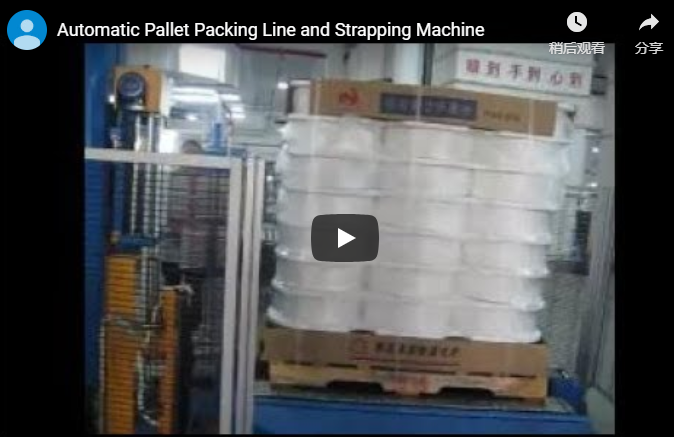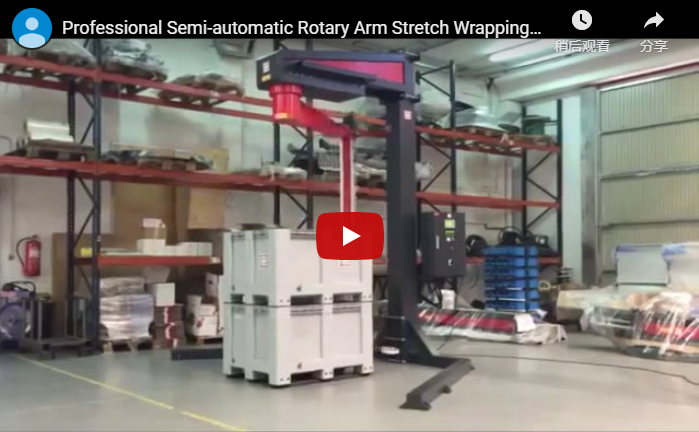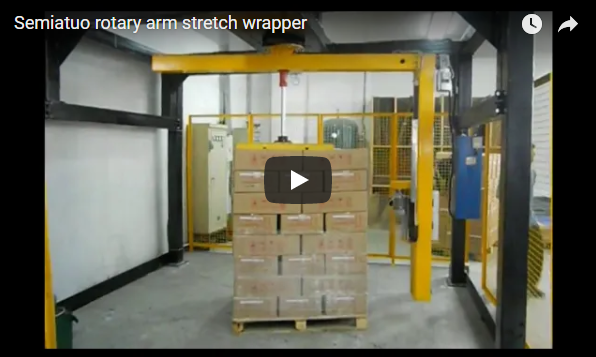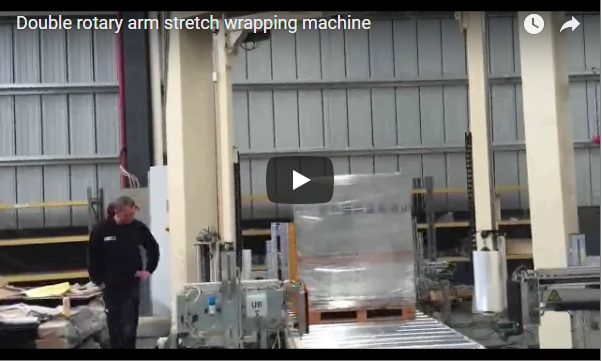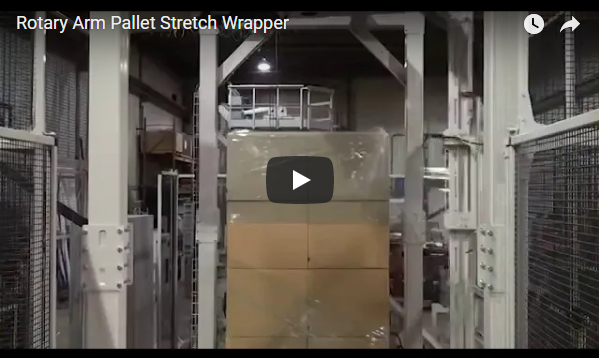Enhancing Load Stability: A Technical Guide to Automatic Rotary Arm Pallet Wrapping Machines
Handling large, heavy, or unstable pallet loads presents significant challenges in logistics and manufacturing environments. Ensuring load integrity during transit is paramount to prevent product damage and maintain operational efficiency. An Automatic Rotary Arm Pallet Wrapping Machine offers a robust solution specifically engineered for these demanding applications. Unlike traditional turntable wrappers where the pallet spins, a rotary arm machine keeps the pallet stationary while the film delivery system rotates around it. This approach is crucial for preventing unstable loads from shifting or toppling during the wrapping process.
This guide provides a technical deep dive into the features, benefits, and real-world applications of automatic rotary arm stretch wrappers, drawing on industry insights and operational experience to help you understand if this technology is the right fit for your facility.
1. Why Choose a Rotary Arm Wrapper Over Turntable Systems?
The core advantage of a rotary arm stretch wrapper lies in its fundamental design: the load remains static. This offers distinct benefits:
- Superior Stability for Challenging Loads: For loads that are exceptionally heavy, tall, lightweight but unstable, or irregularly shaped, keeping the pallet stationary eliminates the centrifugal forces generated by a rotating turntable. This significantly reduces the risk of product shifting or collapse during wrapping.
- Higher Throughput Potential for Heavy Loads: While turntable wrappers can be very fast for standard loads, their speed is often limited by the stability and weight of the pallet. Rotary arm wrappers can maintain consistent, high wrapping speeds (measured in arm RPM) regardless of load weight, making them highly efficient for heavy-duty applications.
- Integration Flexibility: Stationary load positioning can simplify integration with automated conveyor systems, AGVs (Automated Guided Vehicles), and other end-of-line packaging equipment.
From our experience working with various packaging lines, facilities handling heavy building materials, beverages, or fragile stacked goods often see a marked improvement in both safety and wrap quality after implementing rotary arm technology.
2. Key Technical Specifications and Performance Features
Understanding the technical specifications is key to matching a machine to your operational needs. While specific parameters vary by model and manufacturer, here are common features and their significance:
-
Wrapping Arm Speed: Typically measured in Revolutions Per Minute (RPM), this dictates the maximum wrapping throughput. Speeds like 35 RPM allow for rapid processing of pallets, crucial in high-volume operations.
-
Load Capacity: Defines the maximum weight the machine structure and conveyor system (if integrated) can handle. Capacities like 2000kg (approx. 4400 lbs) cater to heavy industrial loads.
-
Maximum Pallet Size: Specifies the largest pallet dimensions (Length x Width x Height) the machine can accommodate. Ensure this matches your standard and occasional oversized loads.
-
Film Delivery System (Powered Pre-stretch): This is critical for film efficiency and load containment. A powered pre-stretch system elongates the film before application (e.g., up to 300%). This means 1 meter of film can be stretched to 3 meters or more, significantly reducing film consumption and cost per pallet. It also provides better load holding force compared to non-pre-stretch systems.
-
Control System (PLC/HMI): Modern machines utilize Programmable Logic Controllers (PLCs) with Human-Machine Interfaces (HMIs). This allows for:
- Storing multiple wrap programs (e.g., different patterns for varying load types).
- Adjusting parameters like arm speed, film tension, top/bottom wrap counts, and pre-stretch levels easily.
- Diagnostics and troubleshooting assistance. Operators often find intuitive touchscreen HMIs significantly reduce training time and error rates.
-
Construction: Look for heavy-duty steel construction, indicating durability for demanding industrial environments. Powder-coated finishes resist corrosion.
-
Safety Features: Non-negotiable elements. These should include safety photo-eyes or light curtains at entry/exit points, emergency stop buttons readily accessible, and potentially safety fencing around the wrapping zone to comply with safety standards like CE or OSHA requirements.
-
Film Compatibility: Designed typically for standard machine-grade Linear Low-Density Polyethylene (LLDPE) stretch film.
-
Important Note: The parameters listed below serve as a general example. Specifications for the exact machine shown in the video or for a custom configuration may differ. Always consult with us for precise technical data.
Example Parameter List:
- Machine Type: Automatic Rotary Arm Pallet Wrapping Machine
- Example Model: ARAPWM-2000 Series
- Control System: PLC with Touchscreen HMI
- Wrapping Arm Speed: Variable, up to 35 RPM
- Maximum Load Weight: Up to 2000kg (4400 lbs)
- Maximum Load Size (L x W): Typically 1200mm x 1200mm (48" x 48"), custom sizes available
- Maximum Load Height: Standard up to 2400mm (94"), extensions possible
- Film Delivery: Powered Pre-stretch Carriage (e.g., 250%-300% fixed or variable)
- Film Type: Machine Grade LLDPE Stretch Film (e.g., 20-30 micron)
- Film Roll Dimensions: Standard 500mm (20") width, 76mm (3") core
- Automation Features: Automatic film attach, cut, and wipe system
- Power Requirements: Varies (e.g., 480V, 60Hz, 3-Phase or local standard)
- Safety: Entry/Exit Photo-eyes, E-stops, Safety Fencing options
- Certifications: CE conformity, UL listed components often available
(Image placeholder: Consider adding an image here showing a close-up of the control panel or the pre-stretch carriage. Alt text: "Close-up of the PLC control panel on an automatic rotary arm wrapper" or "Detail of the powered pre-stretch film carriage system.")
3. Real-World Applications & Performance Insights
The versatility of automatic rotary arm wrappers makes them suitable for diverse industries. Here’s how they solve specific challenges:
3.1. High-Volume Distribution Centers
- Challenge: Handling a wide mix of pallet types, including heavy beverages, unstable stacks of packaged goods, and frequent load changes, all while maintaining high throughput.
- Solution: The rotary arm's stability secures varied loads effectively. Programmable wrap patterns allow quick adaptation to different SKUs. The high arm speed (e.g., 35 RPM) supports demanding fulfillment rates. Automatic film cut/clamp minimizes operator intervention.
- Observed Benefit: Distribution centers often report significant reductions in pallet damage during internal handling and outbound shipping, alongside improved line efficiency compared to manual or semi-automatic methods, especially for difficult loads.
3.2. Chemical Manufacturing and Processing
- Challenge: Ensuring containment security for pallets of drums, bags, or containers holding potentially hazardous materials. Preventing spills and meeting stringent transport regulations are critical.
- Solution: The precise tension control and adjustable pre-stretch ensure a tight, secure wrap without crushing containers. Consistent wrap patterns provide reliable containment. The robust build handles the weight and demands of chemical products.
- Observed Benefit: Manufacturers gain confidence in load security, reducing risks of environmental contamination or costly cleanups. Consistent wrapping aids compliance with transportation guidelines (like DOT regulations in the US).
(Image placeholder: Consider adding an image of a rotary arm wrapper securing pallets of chemical drums or IBCs. Alt text: "Automatic rotary arm wrapping machine securing palletized chemical drums.")
3.3. Agricultural Produce and Food Exports
- Challenge: Wrapping large pallets of perishable goods like fruits, vegetables, or bagged grains. The wrap needs to provide stability but also allow for some breathability, especially for fresh produce, while maximizing film economy for long-distance shipping.
- Solution: The powered pre-stretch system optimizes film usage, critical for cost-sensitive agricultural exports. Specific wrap patterns can be programmed to provide load stability while potentially allowing for air circulation if needed (using specific film types or patterns). The machine handles large, sometimes uneven pallet configurations common in agriculture.
- Observed Benefit: Exporters maintain product quality over long transit times by ensuring load integrity and reducing spoilage. Efficient film use helps manage packaging costs, contributing to better margins.
4. Integration and Maintenance Considerations
4.1. System Integration
Automatic rotary arm wrappers are often integrated into fully automated packaging lines. They typically receive pallets via powered conveyors from upstream processes (like palletizing) and discharge wrapped pallets onto downstream conveyors for labeling, strapping, or direct loading. Compatibility with existing conveyor heights, speeds, and control systems (e.g., handshake protocols) is a key factor during planning.
4.2. Maintenance Best Practices
Like any industrial machinery, regular maintenance is crucial for uptime and performance. Key aspects include:
- Routine Checks: Inspecting film rollers, belts, chains, and safety sensors.
- Lubrication: Following the manufacturer's schedule for greasing bearings and moving parts.
- Film System Cleaning: Keeping the pre-stretch rollers and film path clean ensures optimal film performance.
- Wear Parts: Monitoring components like cutter blades and wipe brushes for wear and replacing them proactively.
- Accessibility: Machines designed with easy access to serviceable parts simplify maintenance tasks. Operators often appreciate well-documented procedures and readily available spare parts.
Preventative maintenance programs significantly extend the machine's life and prevent costly unscheduled downtime.
5. Making the Right Choice
Selecting the appropriate pallet wrapping solution depends on several factors:
- Load Characteristics: Weight, stability, dimensions, and uniformity. Rotary arm excels with heavy, tall, or unstable loads.
- Throughput Requirements: How many pallets per hour need to be wrapped?
- Level of Automation: Standalone operation versus integration into a fully automated line.
- Budget: Rotary arm machines generally represent a higher initial investment than turntable models but offer significant advantages for specific applications.
- Operating Environment: Space constraints, temperature, and cleanliness requirements.
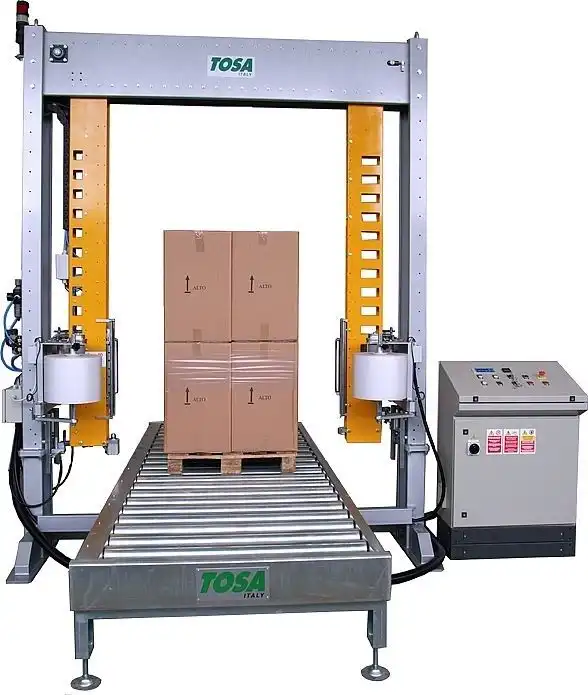
Conclusion
Automatic rotary arm pallet wrapping machines provide a highly effective solution for securing challenging loads in demanding industrial environments. Their ability to wrap heavy, unstable, or oversized pallets safely and efficiently makes them invaluable in distribution, manufacturing, chemical processing, and agriculture. By leveraging features like powered pre-stretch, programmable controls, and robust construction, these machines enhance load integrity, reduce packaging costs, improve safety, and boost overall operational throughput. Evaluating your specific load types, volume requirements, and automation goals will help determine if this advanced wrapping technology is the optimal choice for your facility.
For more detailed information or to discuss your specific application, please feel free to reach out.
Contact us: info@fhopepack.com

